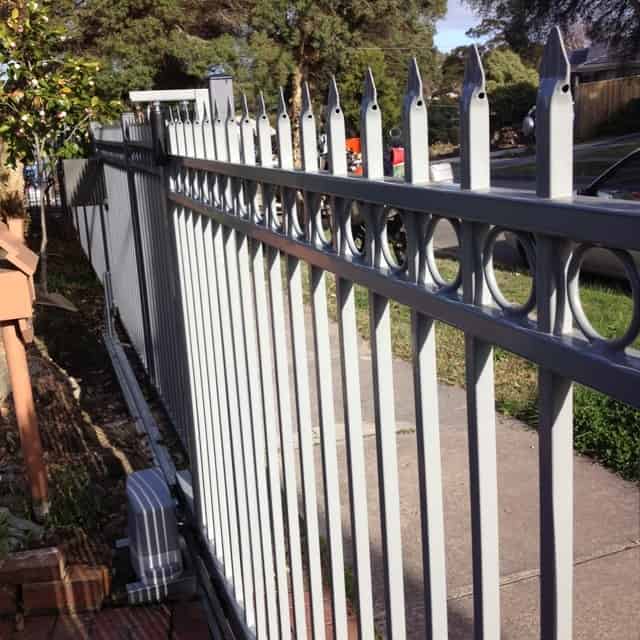Steel Fencing for Correctional Facilities: Providing Maximum Security and Protection
When it comes to correctional facilities, security is the topmost priority. Steel fencing is an essential requirement for correctional facilities, providing maximum security and protection for both staff and inmates. It acts as a barrier, preventing unauthorized entry and providing a level of safety from external threats.
Steel fencing for correctional facilities is constructed to withstand high levels of impact and is designed to be tamper-proof. It is also built to be resistant to corrosion, erosion, and weather conditions. The fencing is usually coated with corrosion-resistant materials, such as galvanized or powder-coated steel, making it durable and long-lasting.
Types of Steel Fencing for Correctional Facilities
There are several types of steel fencing systems that are commonly used in correctional facilities. These include:
1. Chain Link Fencing
Chain link fencing is one of the most widely-used fencing systems in correctional facilities. It is a simple yet effective steel fence that provides high levels of security. It has small holes that make it difficult for inmates to climb or cut through the fence. Additionally, the chain link fence can be customized with razor wire or barbed wire to provide extra security.
2. Welded Mesh Fencing
Welded mesh fencing is made from welded steel wire mesh panels. The panels are joined together to form a solid fence that is durable and tamper-resistant. The mesh fence can also be customized with anti-climb devices or razor wire for added security.
3. Barbed Wire Fencing
Barbed wire fencing is a steel fencing system that consists of steel posts, wire strands, and barbs. The wires are attached to the posts and the barbs are spaced along the length of the wires. The use of barbed wire fencing is typically reserved for higher security areas, such as prison perimeters.
Benefits of Steel Fencing for Correctional Facilities
1. Security and Safety
Steel fencing for correctional facilities is designed to provide maximum security and safety. It acts as a barrier that prevents unauthorized entry, and it keeps inmates secure within the facility. It reduces the risk of escape or intruders from entering the facility.
2. Durability and Longevity
Steel fencing is constructed to withstand harsh environmental elements, such as strong winds, rain, and snow. It is designed to be durable and long-lasting, providing protection for many years. It also requires minimal maintenance, making it a cost-effective choice for correctional facilities.
3. Customization
Steel fencing can be customized to meet specific security requirements. It can be designed to include a range of anti-climb devices, such as razor wire, barbed wire, or spikes. It can also be made to be aesthetically pleasing, blending in with the surrounding environment.
4. Cost-Effective
Steel fencing for correctional facilities is a cost-effective solution that provides high levels of security and protection. It is durable and requires minimal maintenance, reducing long-term costs.
Frequently Asked Questions (FAQs) about Steel Fencing for Correctional Facilities
Q: What is the best type of steel fencing for correctional facilities?
A: The best type of steel fencing for correctional facilities depends on the specific security requirements of the facility. Chain link fencing, welded mesh fencing, and barbed wire fencing are all commonly used in correctional facilities.
Q: How does steel fencing prevent escape attempts?
A: Steel fencing acts as a barrier that prevents inmates from escaping. The small holes in chain link fencing make it difficult for inmates to climb or cut through the fence. Additionally, customization options such as the installation of razor wire or barbed wire can provide extra security.
Q: Can steel fencing be customized to meet specific security requirements?
A: Yes, steel fencing can be customized to meet specific security requirements. It can be designed to include a range of anti-climb devices, such as razor wire, barbed wire, or spikes. The fencing can also be aesthetically pleasing, blending in with the surrounding environment.
Q: Is steel fencing for correctional facilities expensive?
A: Steel fencing for correctional facilities is a cost-effective solution that provides high levels of security and protection. It is durable and requires minimal maintenance, reducing long-term costs.
Q: How long does steel fencing for correctional facilities last?
A: Steel fencing is constructed to withstand harsh environmental elements, such as strong winds, rain, and snow. It is designed to be durable and long-lasting, providing protection for many years. It also requires minimal maintenance, making it a cost-effective choice for correctional facilities.
Conclusion
Steel fencing for correctional facilities is an essential requirement for ensuring maximum security and protection. It acts as a barrier that prevents unauthorized entry and keeps inmates secure within the facility. The benefits of steel fencing are numerous, including durability, customization, cost-effectiveness, and longevity. Choosing the right type of steel fencing for correctional facilities is critical in providing a secure and safe environment for staff and inmates.


